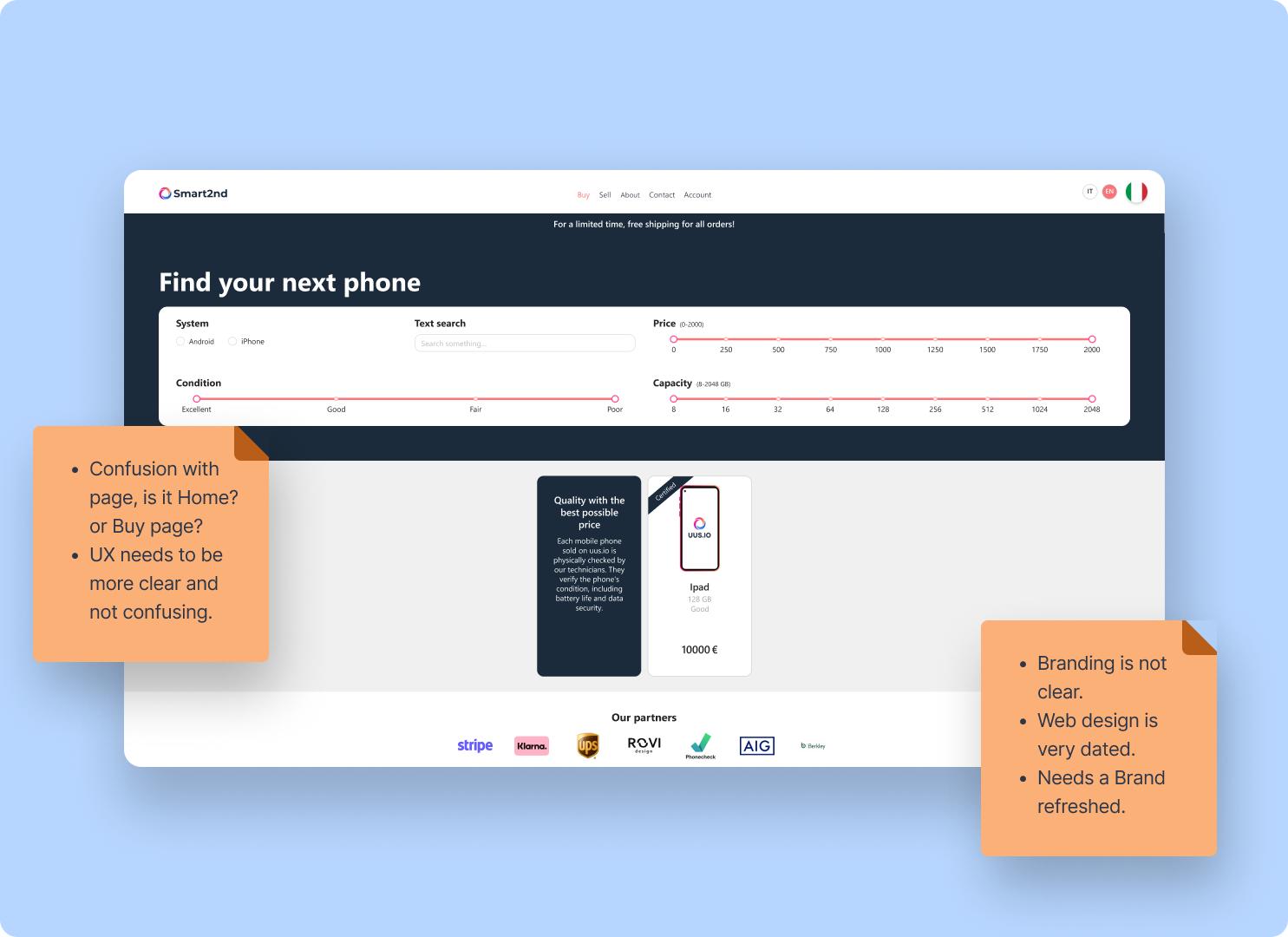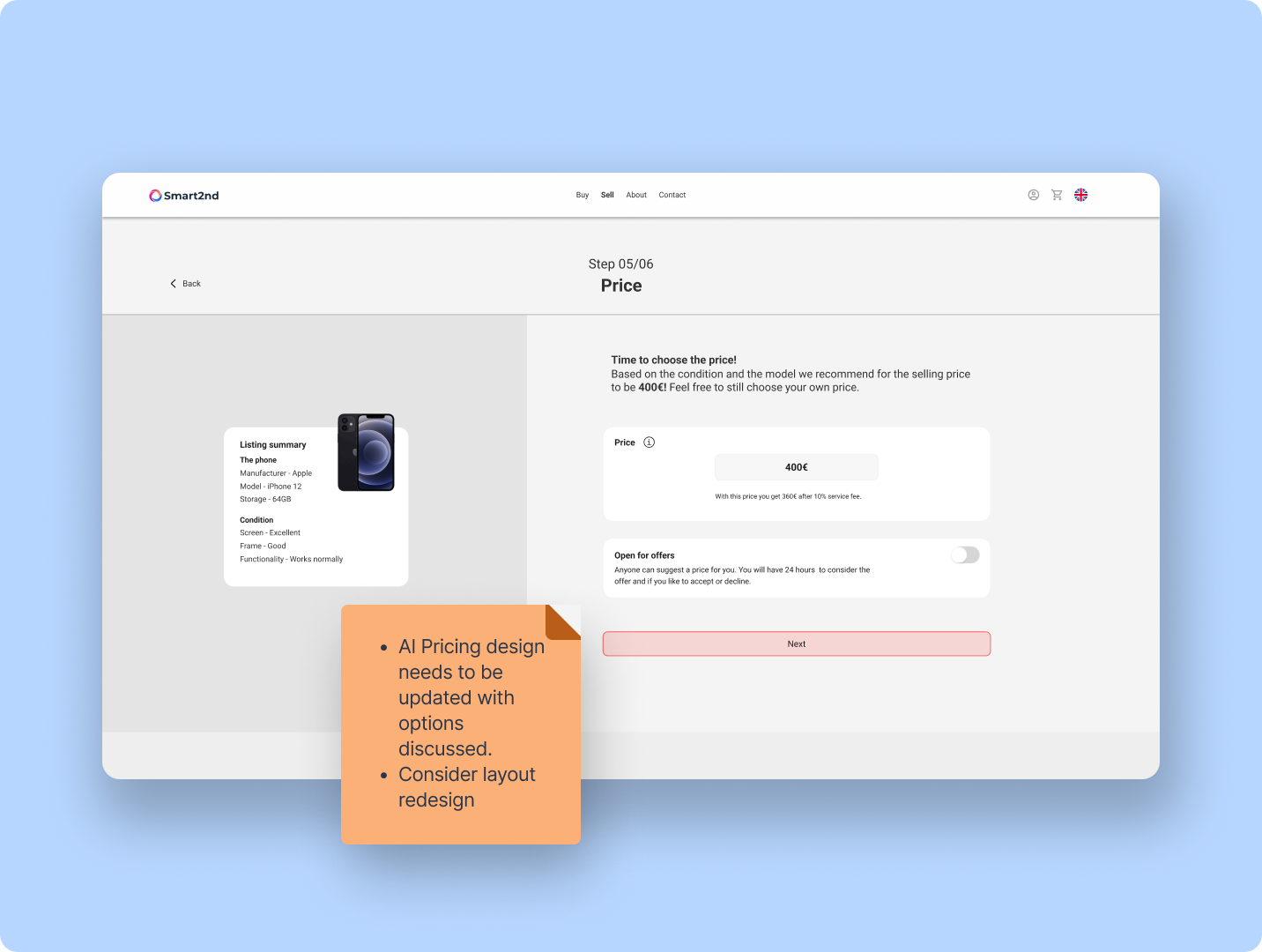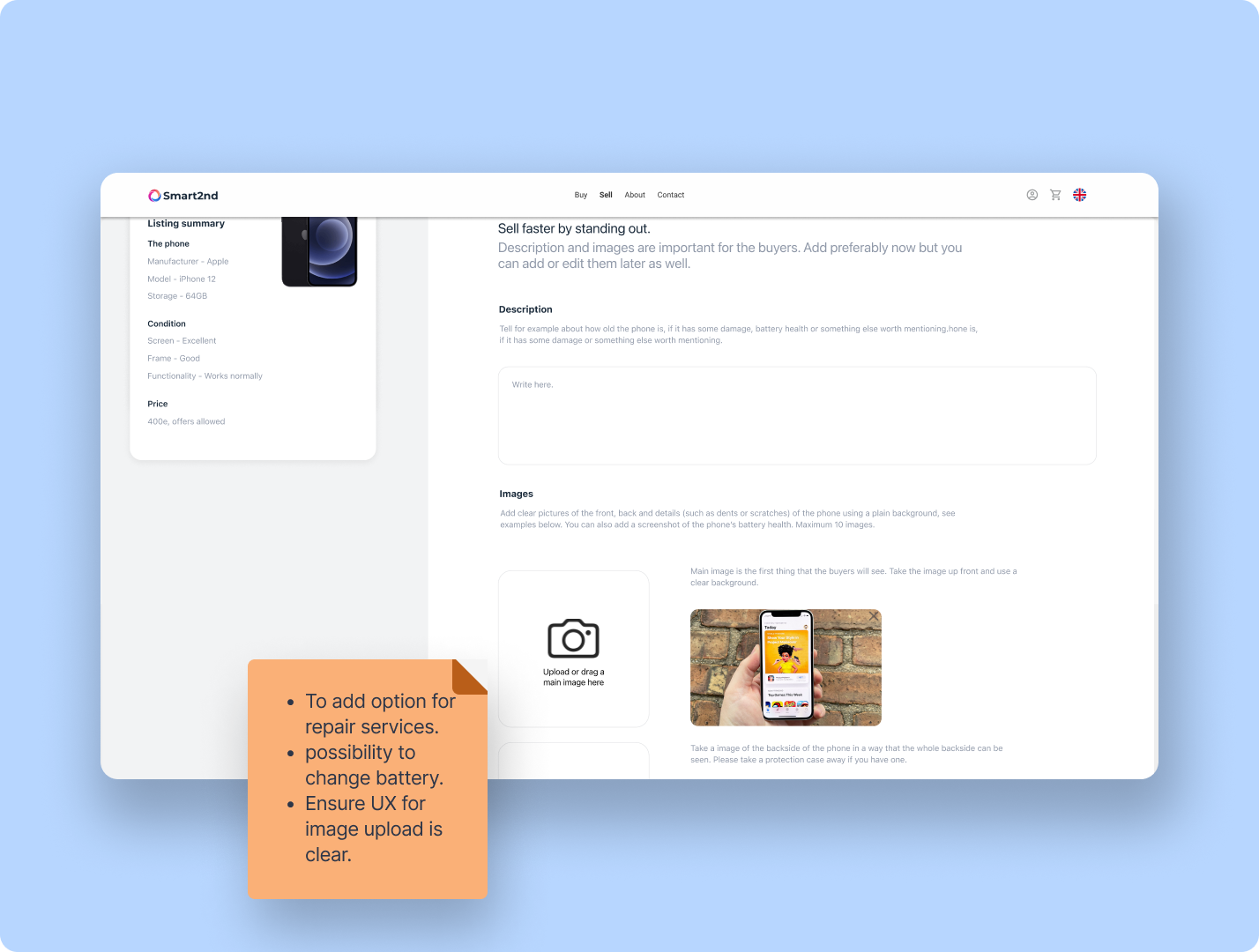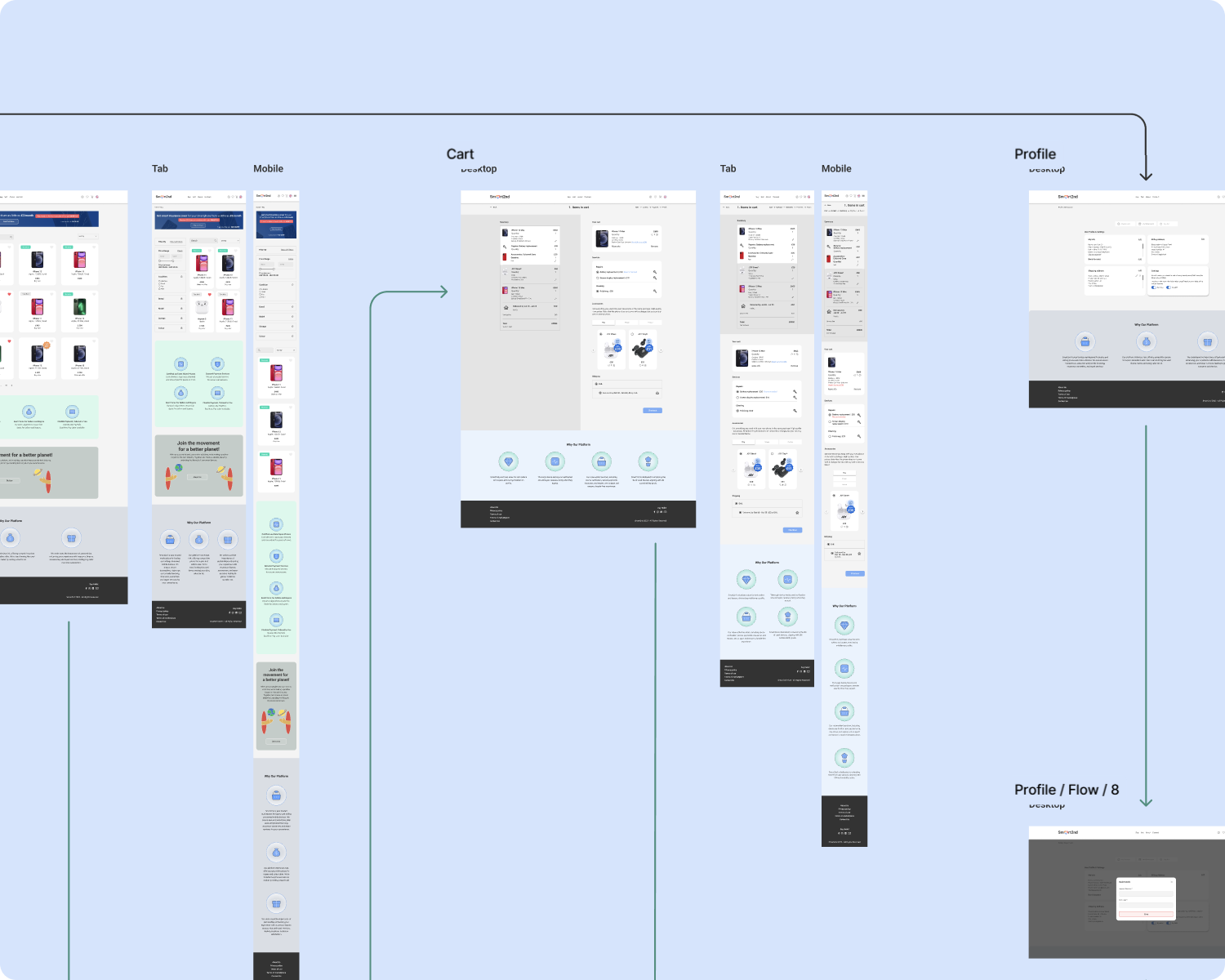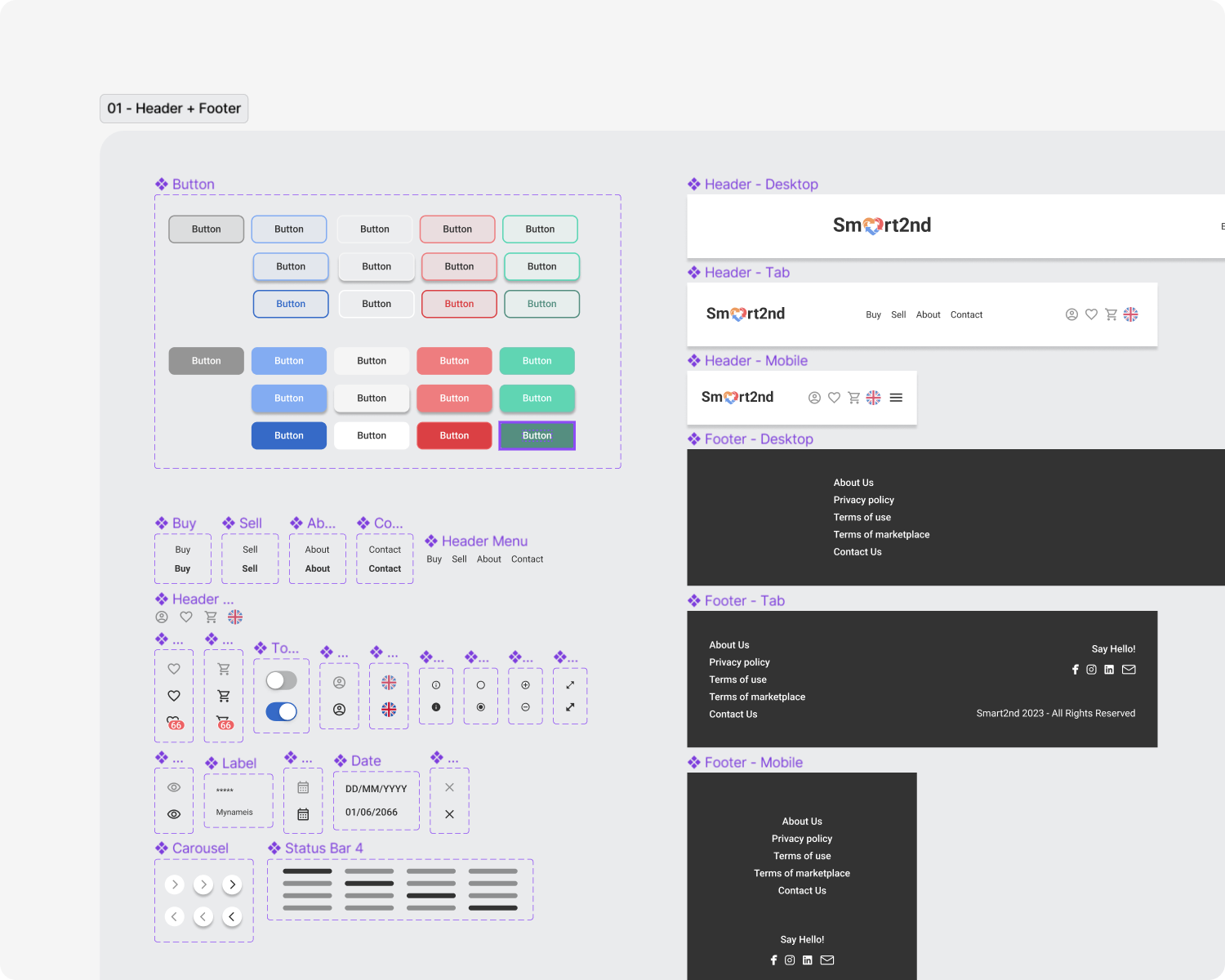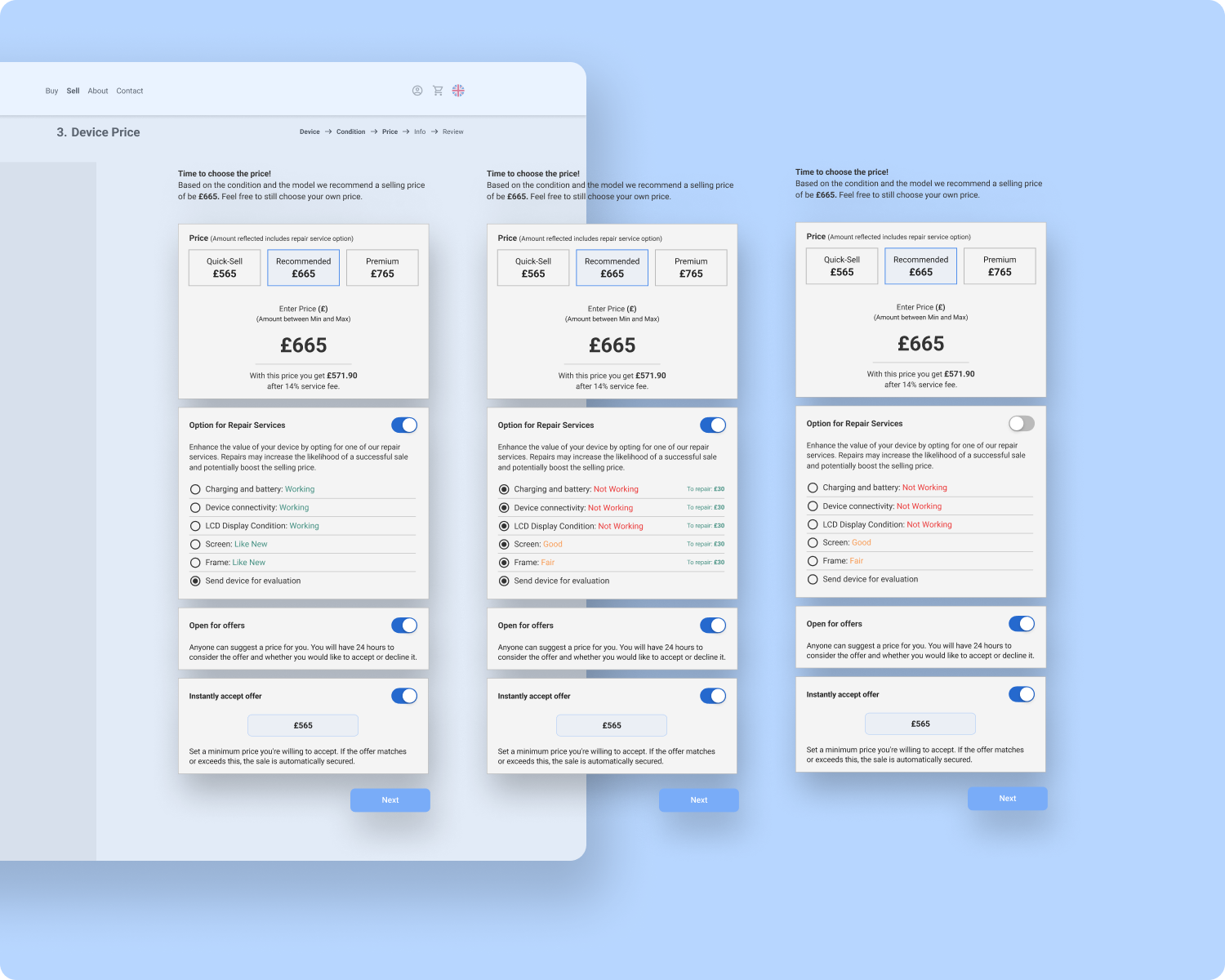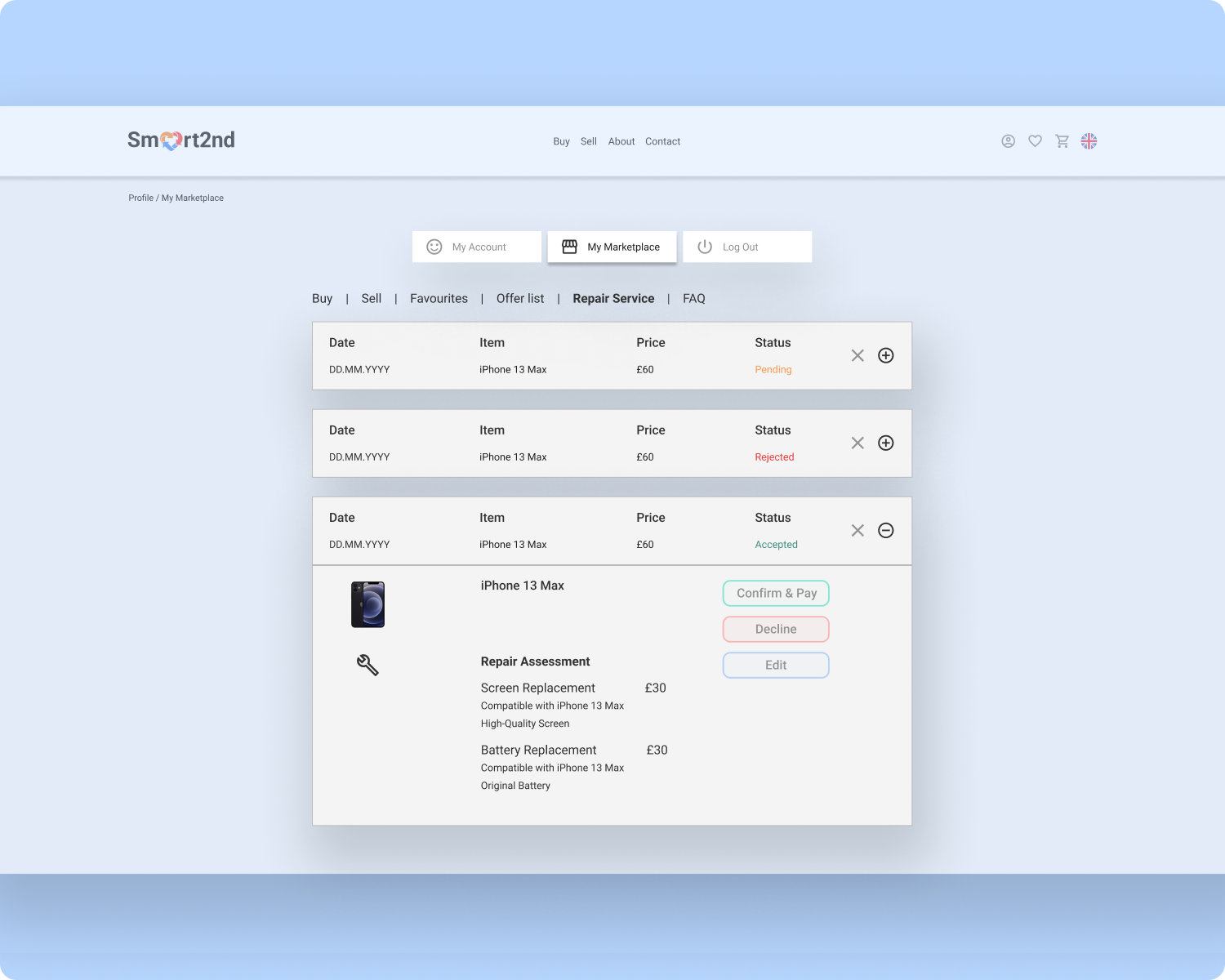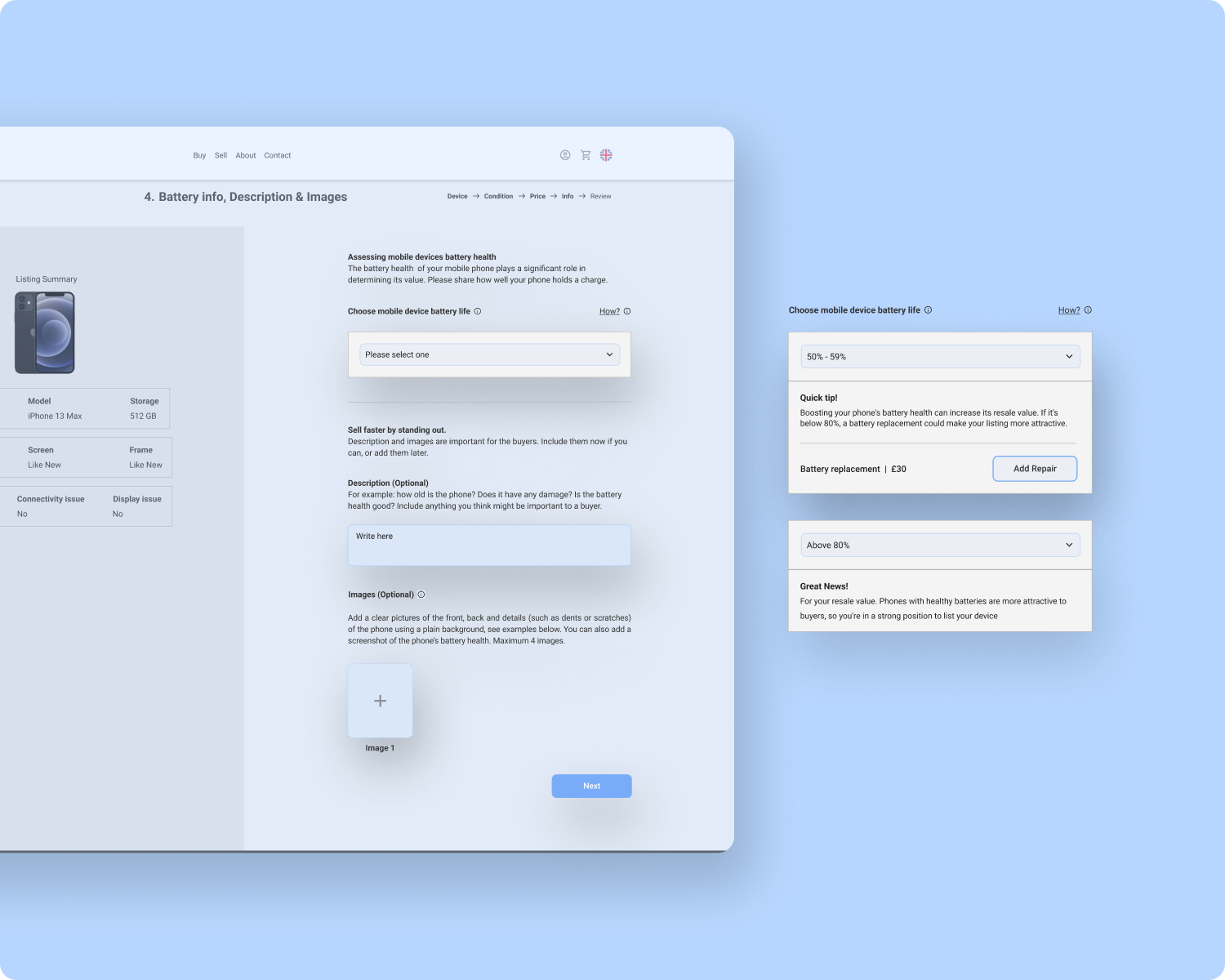Webshop 2.0
Smart2nd
UI/UX Design
Branding Design
Social Media Content
Case Study
In this transformative project, We were tasked with rejuvenating the brand identity and digital presence to align with contemporary aesthetics and modern consumer expectations.
-
Smart2nd's innovative C2C, C2B, and B2C marketplace platform specialises in selling second-hand mobile devices.
-
Improving user experience, modernizing the design, and adding new features to enhance Smart2nd's value proposition.

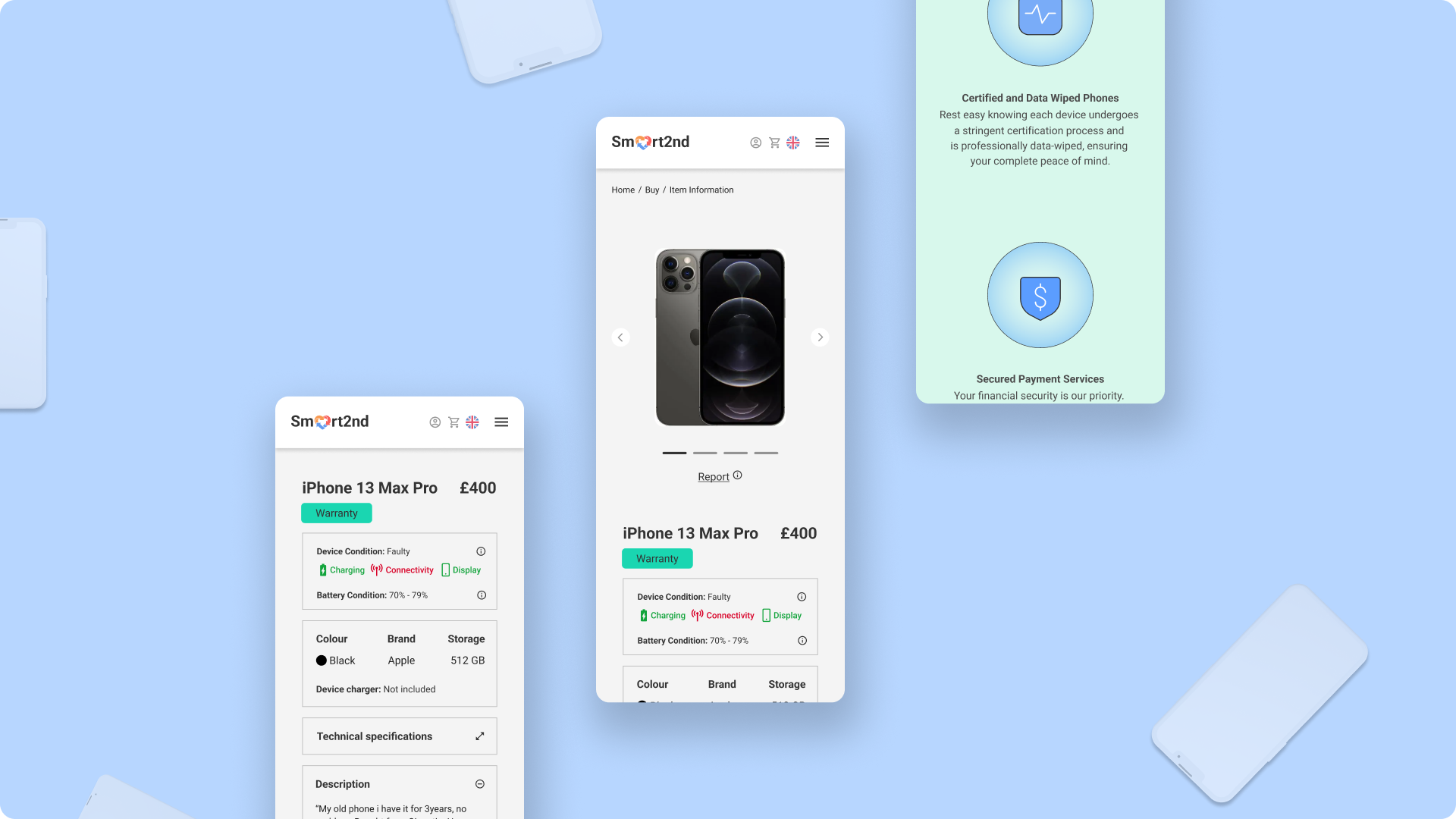
Client Overview
Smart2nd is a platform that sells certified pre-owned mobile devices for C2C, C2B, and B2C markets. Services include secure trade, AI-powered market insights, financing, insurance, and repairs for a seamless user experience.
-
Smart2nd's mission is to make buying and selling pre-owned smartphones accessible and sustainable by providing a secure and user-friendly platform for individual buyers and sellers.
-
Smart2nd values sustainability, user-friendliness, and trust. They are committed to reducing waste, maximizing value, and inspiring positive change in the tech world.
-
Buyers and sellers of certified pre-owned mobile devices who value sustainable tech practices.


Challenges
Revamping the digital platform was a complex task that presented multiple challenges, each of which was overcome with dedication and expertise. We implemented several vital enhancements, solutions & implementations to address these challenges.
-
In the competitive market, Smart2nd must ensure the authenticity and condition of pre-owned devices for both buyers and sellers.
-
Highlight the benefits of AI-powered market insights, finance options, insurance coverage, and repair services to effectively communicate its value proposition and stand out in the market.
Research & Analysis
Evaluation of the existing design:
-
The lack of trust, stemming from a history of deception, fraud, misrepresentation, or a lack of transparency, accountability, or responsiveness in the e-commerce platforms, is a grave concern. Security concerns, including cyber threats such as hacking, phishing, and malware attacks, are rampant and pose significant risks to personal and business data. Unfair pricing without proper justification, or when there is a lack of competition in the market, is a pressing issue. Limited services due to inadequate resources, technical limitations, or strategic decisions can hinder the ability of users to leverage the product or service thoroughly.
-
Feedback and analytics have revealed areas for improvement. The website's home and buy pages have been confusing, but with a more straightforward UX and more visible branding, we can enhance the user experience. The outdated web design, once refreshed, can bring a fresh and modern look to the platform.
-
Each of these marketplaces has its unique advantages and disadvantages. C2C platforms are often seen as an excellent way for individuals to sell their unwanted items and make some extra cash, but they can also be risky, as buyers and sellers may only sometimes be honest with each other. C2B platforms can be great for freelancers to find work, but businesses may need help finding reliable workers. B2C platforms offer consumers a wide range of products but may only sometimes provide the best prices.
-
The world of e-commerce and mobile devices is constantly evolving. People use mobile devices more to make purchases, leading to businesses adapting strategies. Artificial intelligence and big data analytics are used to gain insights into customer behaviour. Social media platforms are being leveraged to drive sales. Subscription-based models are becoming popular. To succeed, businesses must stay up-to-date with these trends and adapt their strategies accordingly.
Design Process
Design approach is a Desktop-first strategy with responsive web design for mobile.
-
Initial wireframes to address layout and proportions. Prototypes for user testing and feedback.
-
Branding update: The logo, colour scheme, and typography are redesigned for consistency.
UI Elements: Designed custom icons, buttons, and other components.
Mockups: High-fidelity mockups for desktop and mobile.
Implementation
For successful project implementation, collaborate with developers, test for quality and usability, and iterate based on feedback.
New Features
-
Setting fair market prices and reducing arbitrage.
-
Repairs, upgrades, finance options, insurance coverage, warranty, accessories, and operator subscription plans.
Customer Journey
1. Mapping new journeys
2. Browsing products
3. Adding Cart & Checkout
4. Utilising new features
5. Post-purchase experience
Results
-
Users reported being more satisfied with their experience, leading to a higher likelihood of repeat purchases and recommendations to others. The feedback allowed the business to identify areas of strength and areas for improvement, leading to further enhancements to the product or service offered.
-
After receiving positive user feedback, the business experienced a noticeable increase in sales, conversion rates, and brand loyalty. This ultimately resulted in a more positive user experience and a more substantial brand reputation for the business.


Conclusion
This project challenged my technical and design skills and enhanced my ability to adapt to and anticipate market needs. The successful overhaul of the Spruce brand and its digital platform, which increased website traffic and brand awareness, exemplifies my commitment to delivering cutting-edge solutions that meet and exceed client expectations. The team and customers' feedback has been overwhelmingly positive, reflecting the impactful changes made. This experience has reinforced my belief in continuous learning and adapting in the fast-evolving digital landscape.
